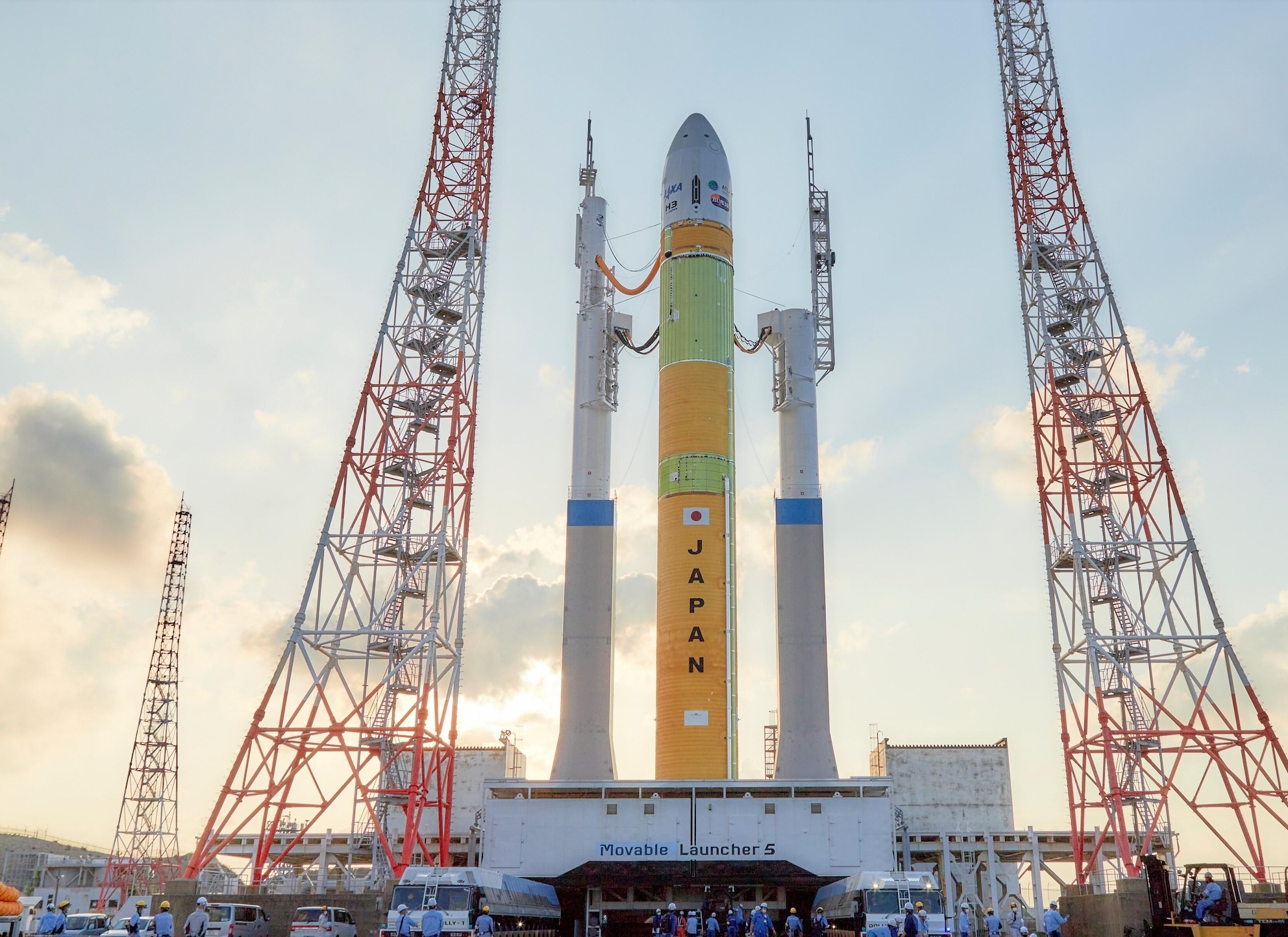Japan's next-generation H3 rocket will fly for the first ever on Thursday evening (Feb. 16), and you can watch the action live.
The H3 is scheduled to launch on its debut mission from Tanegashima Space Center Thursday at 8:37 p.m. EST (0137 GMT and 10:37 a.m. Japan Standard Time on Feb. 17).
Watch the liftoff live here at Space.com, courtesy of the Japan Aerospace Exploration Agency, or directly via JAXA. Coverage is expected to begin around 8 p.m. EST (0100 GMT on Feb. 17).
Related: The history of rockets

Thursday's liftoff will be a big moment for JAXA, which has been working with Mitsubishi Heavy Industries for a decade to develop the new launcher and has high expectations for it.
"The H3 rocket is Japan's new flagship rocket," JAXA wrote in a description of the vehicle.
"It is being developed as a successor to the H-IIA rocket currently in operation so that Japan can continue to have a means of transportation to space," the agency added in another H3 explainer. "Looking ahead to the next 20 years, we are aiming for a world of operation that maintains the industrial base by stably launching about six satellites every year. To that end, orders for private commercial satellites from the launch services market, as well as government satellites, are essential."
Get the Space.com Newsletter
Breaking space news, the latest updates on rocket launches, skywatching events and more!
The H3 stands either 187 feet or 207 feet tall (57 or 63 meters), depending on whether it's flying with a "short" or "long" payload fairing. The rocket is capable of delivering "4 tons or more" to a 310-mile-high (500 kilometers) sun-synchronous orbit and "6.5 tons or more" to geostationary transfer orbit, according to its JAXA specifications page.
Though Thursday's mission is a test flight for the H3, the new rocket will be carrying an operational payload — the Advanced Land Observing Satellite-3 (ALOS-3), also known as DAICHI-3.
If all goes according to plan on Thursday, the H3 will deliver ALOS-3 to a sun-synchronous orbit. The 3-ton satellite is capable of resolving features as small as 2.6 feet (0.8 m) wide on Earth's surface from its final, 416-mile-high (669 km) perch, according to JAXA officials.
The satellite's data will aid disaster monitoring and response, as well as a number of other fields.
"The observed data from ALOS-3 is expected to lead to progress in the various fields due to its unique imaging capabilities; it will make a significant contribution to upgrading global geospatial information and research and application for monitoring of the coastal/vegetation environment," JAXA wrote in a description of the satellite.
Thursday's mission will be the second of the year for a Japanese rocket. An H-IIA successfully lofted Japan's IGS Radar 7 surveillance satellite on Jan. 25.
The H3 was originally scheduled to debut on Tuesday (Feb. 14), but bad weather pushed the liftoff back by two days.
Editor's note: This story was updated on Feb. 14 with news of the weather delay and new launch date of Feb. 16.
Mike Wall is the author of "Out There" (Grand Central Publishing, 2018; illustrated by Karl Tate), a book about the search for alien life. Follow him on Twitter @michaeldwall. Follow us on Twitter @Spacedotcom or Facebook.
Join our Space Forums to keep talking space on the latest missions, night sky and more! And if you have a news tip, correction or comment, let us know at: community@space.com.

Michael Wall is a Senior Space Writer with Space.com and joined the team in 2010. He primarily covers exoplanets, spaceflight and military space, but has been known to dabble in the space art beat. His book about the search for alien life, "Out There," was published on Nov. 13, 2018. Before becoming a science writer, Michael worked as a herpetologist and wildlife biologist. He has a Ph.D. in evolutionary biology from the University of Sydney, Australia, a bachelor's degree from the University of Arizona, and a graduate certificate in science writing from the University of California, Santa Cruz. To find out what his latest project is, you can follow Michael on Twitter.
-
markford Impressive, though my concern is the increasing number of satellites in our orbit and the pollution of our immediate space.Reply -
billslugg Main engines ignited, ran for 6 seconds. Solid boosters did not ignite. Probably, somewhere a permissive was not made.Reply -
aidenthespacekid the rocket was destoeyed in a dstuction oder by jaxa "it failld to fiish the mission" but why it fail in the first placeReply -
billslugg The second stage failed to ignite around 6 minutes into the flight. Destroyed remotely.Reply -
aidenthespacekid Reply
thanksbillslugg said:The second stage failed to ignite around 6 minutes into the flight. Destroyed remotely.









